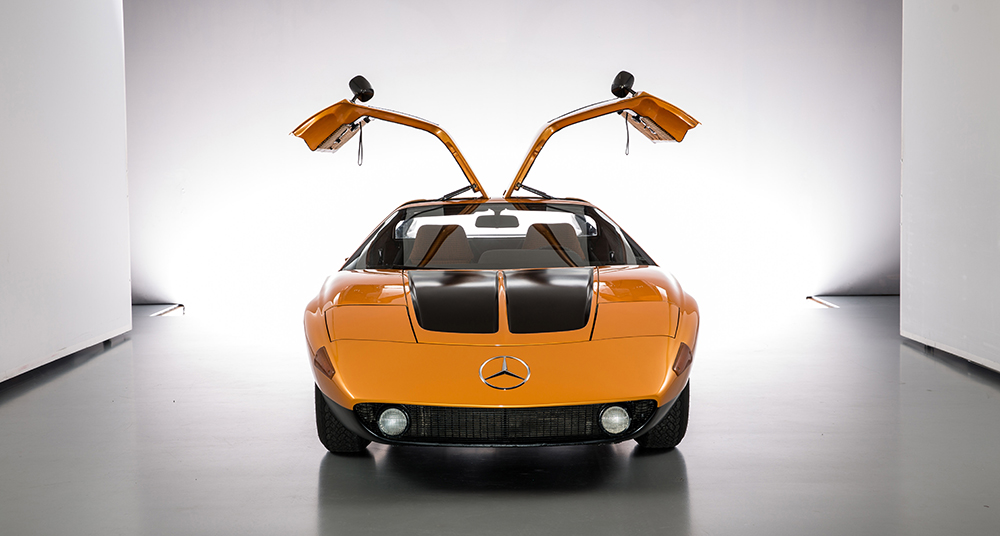La bataille était incroyablement serré entre Craig Breen (Peugeot Rally Academy 208 T16) et Kajetan Kajetanowicz (Lotos Rally Team Fiesta R5) lors de la première journée. Le duel s’est poursuivi ce vendredi aux Açores, avec Breen qui repasse en tête dans la toute dernière spécoale pour 2,3 secondes.
La bataille était incroyablement serré entre Craig Breen (Peugeot Rally Academy 208 T16) et Kajetan Kajetanowicz (Lotos Rally Team Fiesta R5) lors de la première journée. Le duel s’est poursuivi ce vendredi aux Açores, avec Breen qui repasse en tête dans la toute dernière spécoale pour 2,3 secondes.
Breen avait dû céder les commandes à cause d’un tête à queue lors de son premier passage par Sete Cidades mais une grande adresse de sa part sur cette même spéciale quelques heures plus tard, lui a permis de reprendre l’avantage sur Kajetanowicz. « Je n’ai pris aucun risque. J’ai fait en sorte de maintenir la voiture au milieu de la route, a déclaré Breen. Dès qu’on sort de la trajectoire on s’expose à des risques de crevaison ou de touchette.
Avec une expérience assez faible de ces routes, Kajetanowicz a tout de même été brillant, preuve en est ce meilleur temps sur Sete Cidades I, où le pilote polonais a admis : « mon cœur battait à toute allure ! » 1’18’6 le sépare du 3e qui n’est autre que Ricardo Moura. Le septuple champion des Açores était en proie à des problèmes de frein mais il reste confortablement installé sur la 3e marche du podium.
Le double vainqueur de l’épreuve Bruno Magalhaes a dû changer le turbo de sa Peugeot 208 T16. Il était sorti en pneus soft ce matin mais probablement les gommes dures auraient été plus efficaces. Il a également dépassé une jonction sur Sete Cidades, ce qui l’a obligé à faire marche arrière. Une 4e place n’est donc pas si mauvais résultat dans ces circonstances. Il devance de 1’21’’1 un de ses compatriotes José Pedro Fontes, qui a perdu le pare-chocs arrière de sa Citroën DS3 R5 après une petite touchette.

Le rallye de Robert Consani continue de bien se dérouler. Classé 6e, le Français a pourtant été quelque peu retardé par Giacomo Costerao (Peugeot 207 S2000) qui bloquait l’ES9 après un incident. Sam Moffett (Fiesta RRC) pointe à la 7e place. Son frère Josh, occupait la 4e place, jusqu’à ce crash à la fin de l’ES4 tandis que Jean-Michel Raoux, qui avait terminé 3e l’an passé, est sortie de la route au départ de la spéciale 7. Joao Barros est parti à la faute dans l’ES11, bloquant temporairement la route. C’est sur cette même portion qu’Antonin Tlustak (Skoda Fabia S2000) a été contraint à l’abandon.
Jaroslav Orsak (Skoda Fabia S2000) était ravi de rallier pour la première fois l’arrivée de Sete Cidades. Bien qu’il ait tapé un mur dans l’ES9 (endommageant ainsi une des roues arrière) il complète le top 10 ce soir, derrière les deux premiers pilotes de l’ERC2.
The incredibly close battle between Craig Breen (Peugeot Rally Academy 208 T16) and Kajetan Kajetanowicz (LOTOS Rally Team Fiesta R5) continued on day two of the SATA Rallye Açores – with Breen regaining the lead on the day’s final stage to lead overnight by just 2.3 seconds.
Breen lost the lead when he spun on the first run over the signature Sete Cidades volcano stage, but a great drive saw him chip away at Kajetanowicz’s advantage until the Irishman regained first place on the second run through Sete Cidades. “I’m not taking any silly risks and keeping the car in the middle of the road,” said Breen. “It’s so easy to get a puncture or to go off line and knock a tyre off a rim.”
With very little experience of the challenging São Miguel island gravel roads, Kajetanowicz has driven brilliantly – including setting fastest time on the first run over Sete Cidades, during which the Polish driver admitted, “my heart rate must have been close to maximum!” He is now 1m18.6s ahead of third-placed Ricardo Moura (Fiesta R5) – the seven-time Azorean rally champion running out of brakes on Sete Cidades, yet still maintaining a strong podium position.
Two-time event winner Bruno Magalhães changed the turbo for today in his Peugeot 208 T16, but went out on soft Pirellis in the morning, when he felt harder ones would have worked better. He also overshot a junction on Sete Cidades and had to reverse, but wasn’t too unhappy to finish the day in fourth – 1m21.1s ahead of fellow Portuguese driver José Pedro Fontes, who lost his Citroën DS3 R5’s rear bumper after a close encounter with a bank on the day’s final stage.

Robert Consani’s first gravel rally in his stunning Citroën DS3 R5 continues to go well – the Frenchman lying sixth, despite being delayed after Giacomo Costenaro (Peugeot 207 S2000) crashed and blocked SS9. Sam Moffett (Fiesta RRC) was also held up in the same incident, and is seventh tonight. Sam’s brother Josh Moffett was fourth until he crashed his Fiesta RRC at high speed after the flying finish of SS4, while Jean-Michel Raoux, who finished third on SATA Rallye Açores last year, crashed his Ford Fiesta R5 near the start of SS7. João Barros crashed his Fiesta R5 and temporarily blocked SS11, while the same stage saw the retirement of Antonín Tlusťák (ŠKODA Fabia S2000).
Jaroslav Orsák (ŠKODA Fabia S2000) was delighted to reach the finish of Sete Cidades for the first time in three Rallye Açores starts. He hit a wall and broke a rear wheel near the start of SS9, but completes the top 10 tonight, behind the two leading ERC2 drivers.












